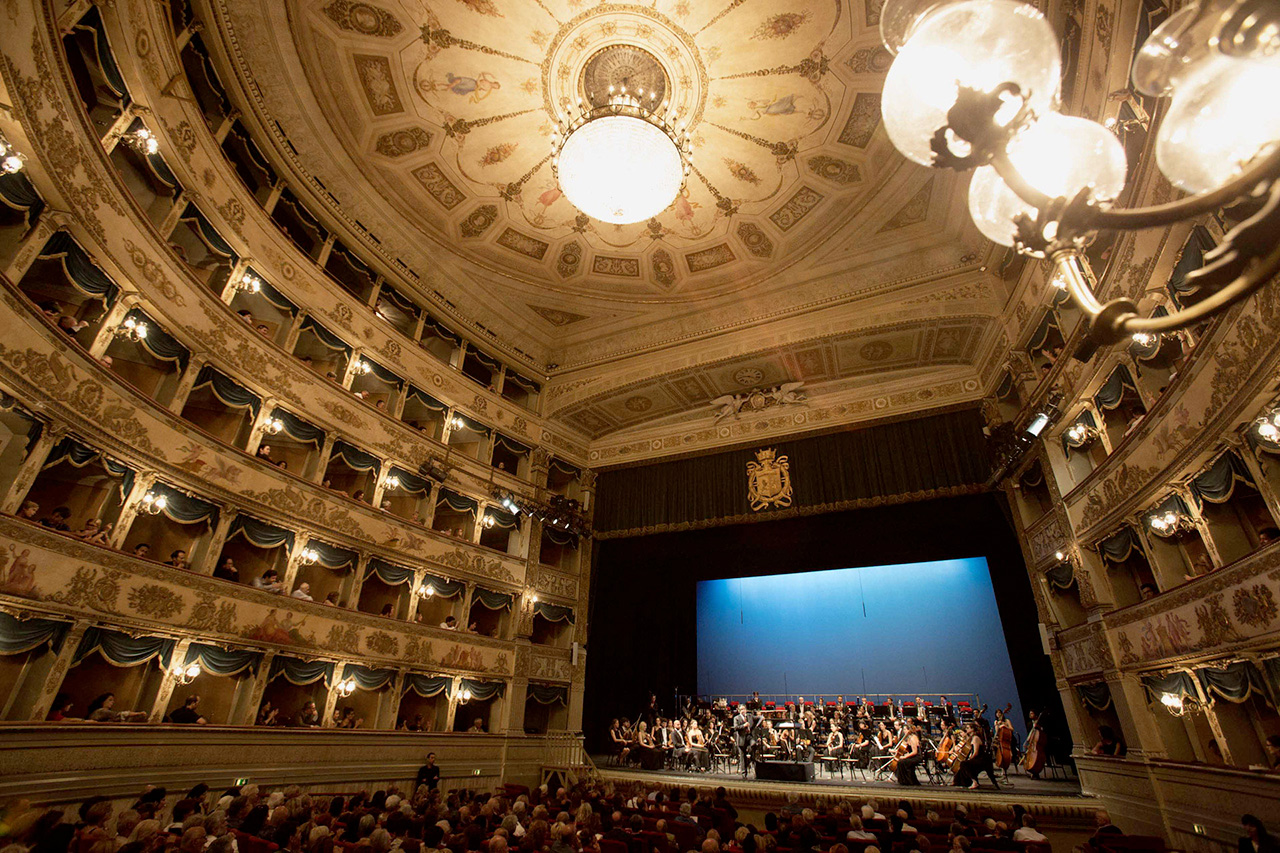Autumn Trilogy: Wandering Heroes in Search of Peace
Dido and Aeneas on the day of St. Cecilia
music Henry Purcell
from
Hail! Bright Cecilia Z 328
text Nicholas Brady
and from
Dido and Aeneas Z 626
text Nahum Tate
Accademia Bizantina
conductor Ottavio Dantone
Pier Luigi Pizzi direction, set and costume design
Oscar Frosio lighting design
Coro della Cattedrale di Siena Guido Chigi Saracini
choirmaster Lorenzo Donati
Charlotte Bowden soprano
Delphine Galou, Candida Guida contraltos
Žiga Čopi tenor
Gianluca Margheri, Federico Sacchi basses
Dido Arianna Vendittelli
Belinda Charlotte Bowden
Aeneas Dominik Koeninger
sorceress Delphine Galou
first witch Chiara Nicastro
second witch Danilo Pastore
handmaid (second woman) Candida Guida
a spirit (Mercury) Žiga Čopi
a sailor Jorge Navarro Colorado
In one of Pier Luigi Pizzi’s most intriguing stage inventions, Purcell’s ode Hail! Bright Cecilia, written in honour of the patron saint of musicians, provided a pretext for the performance of Dido and Aeneas, composed for a girls’ school in Chelsea, London. In 1689, Purcell could hardly have imagined that this would remain the only true and unrivalled English opera for centuries to come, before Britten. For all its echoes of Italian and French models, it is the almost rustic freshness of its melodies, imbued with a refined harmonic texture, that is striking. The same can be said of the most famous of Purcell’s four Cecilian pieces, written three years later: music as the voice of nature, a universal language; music that “In unseen Chains does the Fancy bind”; music that “charms the Sense and captivates the Mind”. Simply music.





